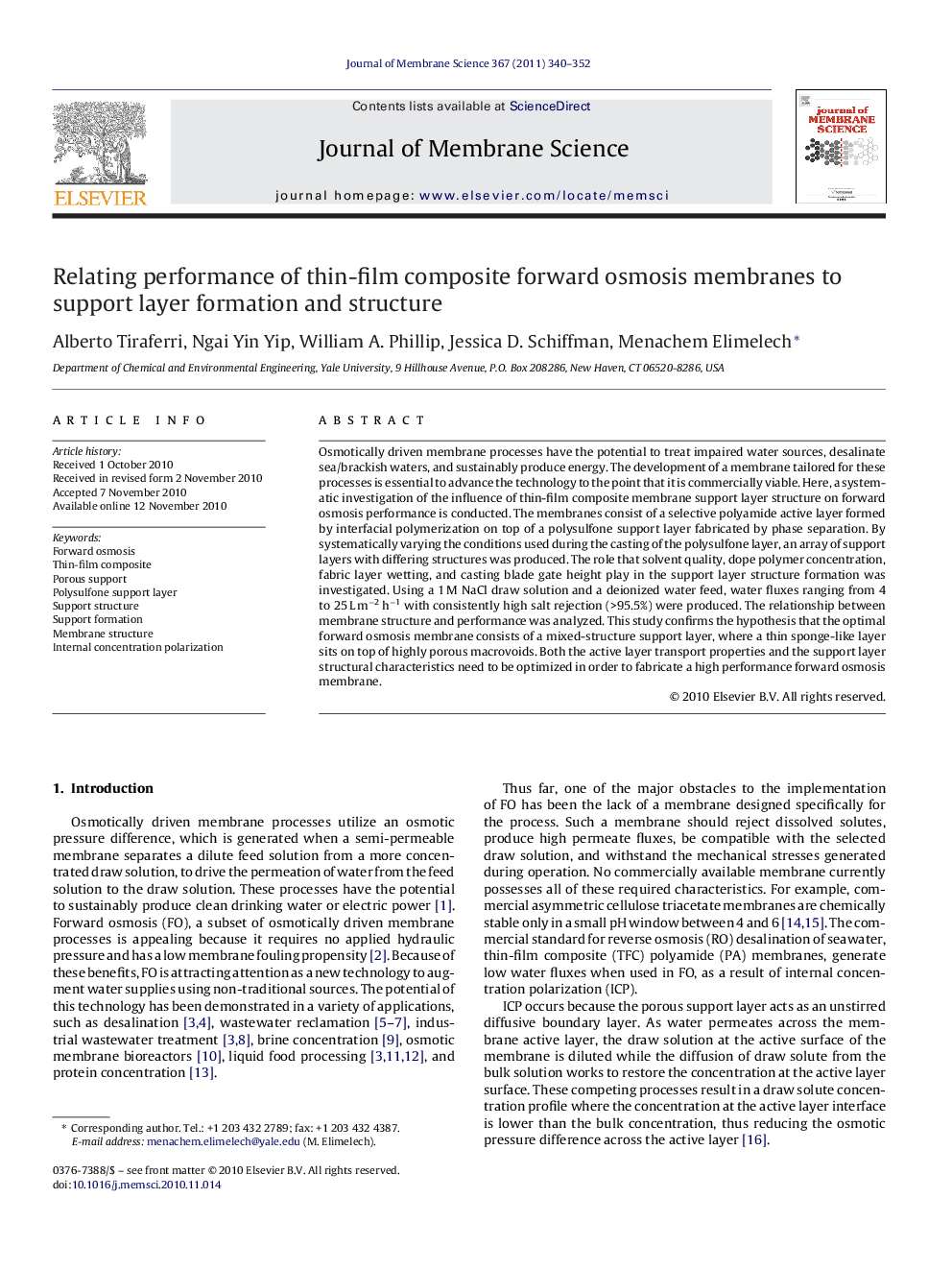| کد مقاله | کد نشریه | سال انتشار | مقاله انگلیسی | نسخه تمام متن |
|---|---|---|---|---|
| 636047 | 1456112 | 2011 | 13 صفحه PDF | دانلود رایگان |

Osmotically driven membrane processes have the potential to treat impaired water sources, desalinate sea/brackish waters, and sustainably produce energy. The development of a membrane tailored for these processes is essential to advance the technology to the point that it is commercially viable. Here, a systematic investigation of the influence of thin-film composite membrane support layer structure on forward osmosis performance is conducted. The membranes consist of a selective polyamide active layer formed by interfacial polymerization on top of a polysulfone support layer fabricated by phase separation. By systematically varying the conditions used during the casting of the polysulfone layer, an array of support layers with differing structures was produced. The role that solvent quality, dope polymer concentration, fabric layer wetting, and casting blade gate height play in the support layer structure formation was investigated. Using a 1 M NaCl draw solution and a deionized water feed, water fluxes ranging from 4 to 25 L m−2 h−1 with consistently high salt rejection (>95.5%) were produced. The relationship between membrane structure and performance was analyzed. This study confirms the hypothesis that the optimal forward osmosis membrane consists of a mixed-structure support layer, where a thin sponge-like layer sits on top of highly porous macrovoids. Both the active layer transport properties and the support layer structural characteristics need to be optimized in order to fabricate a high performance forward osmosis membrane.
Figure optionsDownload high-quality image (223 K)Download as PowerPoint slideResearch highlights▶ The ideal FO TFC membrane has both high performance active and support layers. ▶ The ideal support layer maximizes porosity to minimize concentration polarization. ▶ A finger-like morphology with large macrovoids maximizes porosity. ▶ Macrovoids spanning the entire support layer and open at its bottom maximize porosity. ▶ The ideal support layer facilitates the formation of an active layer with high A and low B.
Journal: Journal of Membrane Science - Volume 367, Issues 1–2, 1 February 2011, Pages 340–352